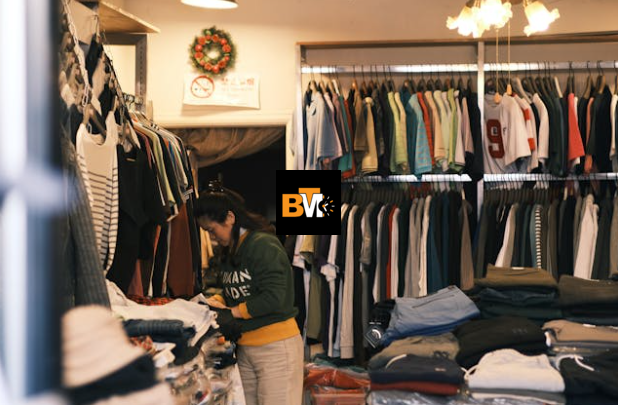Every successful retail store starts with a great product selection. But the process of sourcing merchandise—finding the right products at the right prices, from reliable suppliers—can be a challenge, especially for new retailers. Whether you’re opening a boutique, running a chain of stores, or managing an eCommerce storefront with a physical location, the success of your business hinges on the quality, demand, and availability of your merchandise.
This guide explores the step-by-step approach to sourcing products for your retail business, offering actionable insights on planning, finding suppliers, evaluating product quality, and negotiating deals. By the end, you’ll have a clear understanding of how to build a merchandise strategy that supports profitability and long-term growth.
Step 1: Understand Your Target Audience
Before you even think about where to get merchandise, take time to define who you are selling to. Knowing your target audience helps guide every decision—from the type of products you stock to pricing, branding, and marketing.
Ask yourself:
- What is the age group, gender, or income level of my target customers?
- What are their interests, shopping habits, and preferred brands?
- Do they prioritize quality, price, exclusivity, or trendiness?
For example, if you’re targeting environmentally conscious millennials, you’ll want to source eco-friendly products from sustainable suppliers. If you’re opening a store in a tourist-heavy area, unique souvenirs and local crafts may perform better.
Step 2: Decide on a Business Model
Your merchandise sourcing strategy will depend on your retail model. Common types include:
- Brick-and-Mortar Stores: Physical shops that may require a larger inventory for display and walk-in purchases.
- Online Stores: Can stock fewer items or use dropshipping.
- Pop-Up Stores: Require fast-moving, trend-based merchandise.
- Consignment Retailers: Partner with suppliers who get paid only when items are sold.
- Private Label Brands: Sell products manufactured by a third party but branded with your label.
Choosing a model influences everything from supplier selection to minimum order quantities and shipping logistics.
Step 3: Determine Your Budget and Margins
Understanding your budget is key to sourcing merchandise that aligns with your business goals. Consider:
- Cost of goods
- Shipping and import fees
- Taxes and duties
- Storage and inventory costs
Also, factor in your desired profit margins. For most retailers, a 50-60% markup on cost is standard. For example, if you buy an item for $20, you might sell it for $40–$45, depending on market demand and competition.
Step 4: Research Suppliers and Wholesalers
Now comes the important step: finding reliable suppliers. There are multiple avenues you can explore:
1. Wholesale Marketplaces
Platforms like Alibaba, Faire, Tundra, and Handshake offer access to thousands of suppliers across various industries. You can compare prices, read reviews, and even place sample orders to evaluate product quality.
2. Trade Shows and Expos
Industry trade shows are excellent for meeting suppliers face-to-face and discovering new products. Events like the NY NOW, MAGIC Las Vegas, or Canton Fair (China) allow you to build relationships, negotiate pricing, and see the merchandise firsthand.
3. Local Manufacturers
Partnering with local producers can provide better control over product quality and faster delivery times. This is especially ideal if you’re looking to support local businesses or market “Made in [Your Country]” products.
4. Dropshipping Suppliers
If you prefer not to hold inventory, dropshipping allows you to sell products that are shipped directly from the supplier to the customer. Platforms like Spocket, Oberlo, or Printful make dropshipping easier for online and physical hybrid retailers.
5. Direct from Brands
Some retailers establish direct agreements with popular brands to resell their products. This usually involves meeting specific requirements such as store layout, pricing compliance, and minimum orders.
Step 5: Evaluate Product Samples
Never commit to large orders without inspecting product samples. This helps ensure:
- Product quality matches the description
- Sizes, colors, or features are accurate
- Packaging meets your standards
Requesting samples may involve a small fee, but it’s a worthwhile investment to avoid customer complaints and returns down the line.
Step 6: Negotiate Terms and Agreements
Once you’ve found a supplier, it’s time to negotiate:
- Pricing: Ask for discounts on bulk orders or repeat purchases.
- Minimum Order Quantities (MOQs): Ensure they align with your sales volume and storage capacity.
- Shipping Times and Costs: Clarify delivery windows, carriers, and who pays for what.
- Payment Terms: Common terms include 30% deposit upfront, 70% upon delivery. Some suppliers may offer Net 30 or Net 60 invoicing for long-term clients.
Always request a formal contract or agreement that outlines these terms to protect both parties.
Step 7: Organize Your Inventory
Once the merchandise arrives, it’s important to have a system in place for inventory management. This helps prevent stockouts or overstocking and keeps your operations running smoothly.
You can use inventory software like Shopify POS, Square for Retail, Zoho Inventory, or TradeGecko to:
- Track stock levels
- Set low-stock alerts
- Forecast demand
- Sync online and offline inventory
Efficient inventory management can reduce costs, increase profitability, and improve the customer experience.
Step 8: Analyze Sales and Reorder Smartly
Once your merchandise is on the shelves or online, your job isn’t done. Analyze sales data to see which products are performing well, and which ones aren’t. This allows you to:
- Adjust your product mix
- Promote slow-moving items
- Increase orders for best-sellers
Consider implementing a reorder strategy such as:
- Just-in-time (JIT) ordering to reduce inventory holding costs
- Seasonal reordering for fashion and gift stores
- Automatic replenishment for everyday essentials
Bonus Tip: Build Relationships with Suppliers
Building long-term relationships with trustworthy suppliers can lead to:
- Better pricing and exclusive deals
- Early access to new products
- Priority fulfillment during peak seasons
- Collaborative marketing efforts
Good communication, timely payments, and honest feedback help nurture these relationships and create mutual success.
Conclusion
Learning how to source the right products can seem overwhelming, but it becomes manageable with a structured approach. Start by understanding your customer base, choosing the right business model, and finding suppliers that align with your values and goals. Be sure to assess product quality, manage inventory wisely, and constantly analyze your sales data for improvements.
Whether you’re launching a new venture or growing an established brand, knowing how to get merchandise for a retail store is a vital part of retail success. With the right strategy in place, you’ll be equipped to offer a compelling product assortment that keeps customers coming back and your business thriving.







Leave a Reply